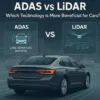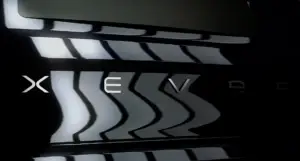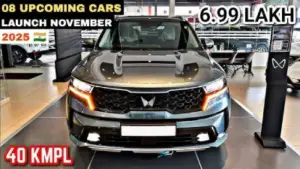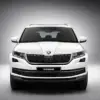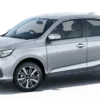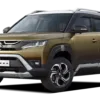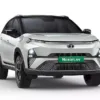Introduction
As the world accelerates toward a future dominated by self-driving cars and advanced driver-assistance systems (ADAS), LIDAR technology has emerged as a cornerstone of innovation. LIDAR, or Light Detection and Ranging, is a remote sensing method that uses light in the form of pulsed lasers to measure distances. Its applications in the automotive industry are revolutionizing how vehicles perceive and interact with their surroundings. In this post, we delve into the intricacies of LIDAR technology, its role in modern vehicles, and its transformative potential for road safety and automation.
What is LIDAR Technology?
LIDAR technology uses laser beams to create detailed, high-resolution 3D maps of a vehicle’s environment. These maps are crucial for enabling cars to understand and respond to their surroundings accurately.
- How It Works:
- A LIDAR sensor emits laser pulses.
- The pulses hit objects and return to the sensor.
- The time taken for the return is measured to calculate distances and create a 3D representation.
- Components of LIDAR Systems:
- Laser Emitters: Emit short pulses of light.
- Detectors: Capture the reflected light.
- Processing Unit: Converts raw data into actionable information.
Applications of LIDAR in Cars
LIDAR technology is becoming an integral part of various automotive applications. Let’s explore its most significant uses:
- Autonomous Driving
- LIDAR is a key enabler for self-driving cars. It allows vehicles to:
- Detect obstacles and pedestrians.
- Identify road edges and lane markings.
- Navigate through complex environments.
- LIDAR is a key enabler for self-driving cars. It allows vehicles to:
- Advanced Driver-Assistance Systems (ADAS)
- LIDAR supports features like:
- Adaptive cruise control.
- Emergency braking.
- Lane-keeping assistance.
- LIDAR supports features like:
- Mapping and Localization
- High-definition maps created by LIDAR sensors help vehicles understand their exact location and surroundings.
- Collision Avoidance
- By providing real-time data, LIDAR systems can anticipate collisions and take preventive actions, enhancing overall road safety.
Advantages of LIDAR Technology in Cars
While there are various sensors like radar and cameras, LIDAR stands out due to its unique advantages:
- High Precision:
- LIDAR offers centimeter-level accuracy, making it ideal for detecting small objects.
- Wide Field of View:
- LIDAR provides a comprehensive 360-degree view, ensuring no blind spots.
- Performance in Diverse Conditions:
- Unlike cameras, LIDAR performs well in low-light or challenging weather conditions.
- Real-Time Data Processing:
- Enables instantaneous decision-making for enhanced safety.
Challenges and Limitations
Despite its advantages, LIDAR technology faces certain challenges:
- Cost:
- LIDAR systems are expensive, impacting the overall cost of vehicles.
- Weather Sensitivity:
- Heavy rain or snow can reduce the accuracy of LIDAR sensors.
- Integration with Other Sensors:
- Effective fusion with cameras and radar systems is required for comprehensive functionality.
- Size and Aesthetics:
- Bulky LIDAR systems can affect vehicle design.
Transitioning to Affordable and Scalable LIDAR Solutions
The automotive industry is actively working to address these challenges. Innovations in solid-state LIDAR and economies of scale are driving down costs and improving reliability.
- Solid-State LIDAR:
- Smaller and more affordable than traditional mechanical LIDAR.
- Suitable for mass production.
- Partnerships and Investments:
- Automakers are partnering with LIDAR manufacturers like Velodyne, Luminar, and Innoviz to integrate cutting-edge solutions into their vehicles.
LIDAR vs. Other Sensors
A common debate in the automotive industry revolves around the role of LIDAR compared to other sensors like cameras and radar. Let’s break it down:
- LIDAR vs. Cameras:
- Cameras excel in recognizing colors and textures, while LIDAR provides precise depth measurements.
- LIDAR vs. Radar:
- Radar is better at detecting objects in adverse weather conditions, but LIDAR offers higher resolution.
- Fusion of Technologies:
- A combination of LIDAR, radar, and cameras offers the best of all worlds, creating a robust sensing suite.
Real-World Examples of LIDAR in Automotive
Several companies are at the forefront of adopting LIDAR technology:
- Waymo:
- Uses LIDAR extensively in its autonomous taxi fleet.
- Tesla:
- While Tesla relies primarily on cameras and radar, it acknowledges the potential of LIDAR for certain applications.
- Audi:
- The Audi A8 was one of the first production cars to feature LIDAR technology for Level 3 automation.
- Ford and GM:
- Both automakers are incorporating LIDAR into their ADAS and self-driving prototypes.
Future of LIDAR in Cars
The future of LIDAR technology is promising, with several trends shaping its trajectory:
- Miniaturization:
- Compact LIDAR systems that integrate seamlessly into vehicle designs.
- Lower Costs:
- Advances in manufacturing and higher adoption rates will reduce costs.
- Increased Reliability:
- Improvements in software and hardware will enhance the reliability of LIDAR systems.
- Wider Adoption:
- As LIDAR becomes more affordable, it will feature in mid-range and entry-level vehicles, not just premium models.
Conclusion
LIDAR technology is undeniably a game-changer in the automotive industry. By providing unparalleled precision and real-time insights, it is paving the way for safer and more efficient transportation. As the technology continues to evolve, it holds the potential to become a standard feature in every vehicle, bringing us closer to a future of fully autonomous and intelligent mobility.



